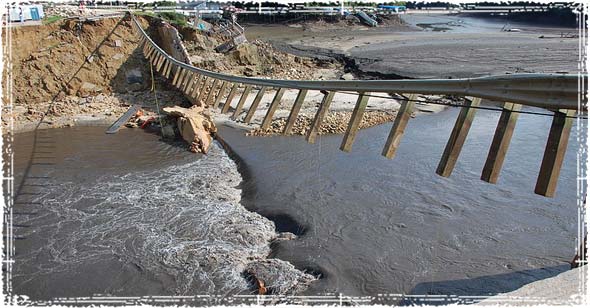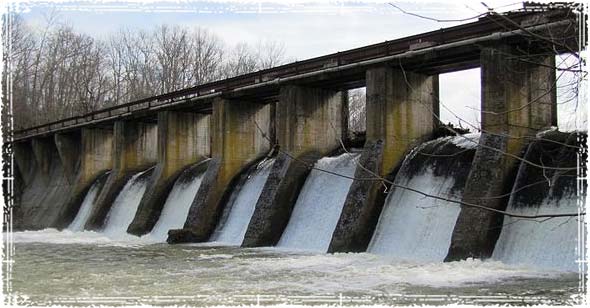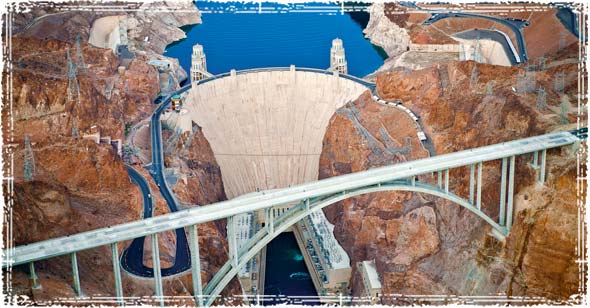As part of our series on our nation’s failing infrastructure, we are going to take a look at our country’s Dams, and what preparedness steps you should take to protect yourself and your family from potential dangers.

Dams in the U.S. were built to provide protection from floods, to build up water supplies in areas of the country that lacked adequate water resources, and to provide power to large parts of the country. In some way or another, most Americans are impacted by these dams.
The average age of dams in the U.S. is more than 53 years old. As they get older, the risk of a catastrophic damage caused by one of these barriers failing increases, since many of them were constructed with very little thought to future downstream development. The U.S has over 85,000 dams, many of which have been deemed deficient high-hazard dams because of their age and deteriorating condition.
Hazardous Dams in the U.S.
Over the last decade, the number of Dams that have been placed on the list of deficient high-hazard dams has skyrocketed. The Association of State Dam Safety Officials estimates that more than 4,000 U.S. dams are deficient and in need of repair, the list includes 2,000 deficient high-hazard dams.
Most people living in areas that could be affected by these failures are completely unaware of the potential hazards just upstream. Because of an increased threat of terrorism, the Federal government has restricted maps from showing areas that would be inundated by flood waters, making it hard for the average citizen to fully understand the dangers they may face.
To find out if you live in an inundation zone, you are going to have to do your own research. This can be done by:
- Studying local topographic maps to find out if you are in one of these dam failure inundation zones.
- Pulling up your area on Google Earth and studying the Dams in your area.
- Contacting your state’s dam safety agency, and talking to local emergency management officials about potential dangers.
Terrorism Concerns: Are Dams a high value Terrorist Target?

There is a growing concern among intelligence officials that U.S. Dams may be on the top of the list when it comes to high value targets for terrorists. This is in large part due to the widespread and catastrophic damage that would be caused if a major U.S. Dam Failed.
For years intelligence officials worried about our nation’s infrastructure, particularly our dams. In fact, a number of terror suspects have already been arrested in connection with targeting U.S. Dams, including a Saudi Student who purchased explosive chemicals over the Internet, as part of a plan to bomb dams.
The devastating consequences of a terrorist attack on one of our nation’s dams would cause an economic impact that would affect the entire country. If one of our major Dams was taken down by either terrorists or by natural causes, the death toll and the economic impact would be so great that experts say it could take decades to recover. In the case of a dam like Glen Canyon Dam, or the infamous Hoover Dam, the long-term impact would devastate major cities like Los Angeles, Phoenix, and Las Vegas for years, maybe decades. The threat is so serious that the government recently spent over $240 million to build a bypass bridge that rerouted traffic away from the Hoover Dam.

What can you do if you live in a Dam break inundation area?
Ask Questions: Your State officials, or the owner of the Dam should be able to provide information on the dam’s potential hazard classification, when it was last inspected, and what its current condition might be.
Know your Evacuation Routes: If you live or work in an area that lies in a dam break inundation area, you need to know your evacuation routes so that you can immediately take action at the first sign of a dam failure. If flooding becomes imminent, don’t wait for evacuation notices; immediately move to high ground outside the flood area.
Warning Systems: Find out if there are local warning systems in place that will alert you to problems or possible incidents. Are their sirens and phone messaging systems, or are you on your own?
Put Together a Bug out Bag: Just like we suggested in last week’s article about our country’s failing levees, we suggest having a bug out bag ready to go at all times. This bag should be filled with everything you need to survive an extended stay away from your home.




Took a look at a map of what’s upstream of my area a few years back and realized I Had to buy my house on a hill as a safety measure.
Didn’t research enough, though~ my neighborhood used to be the city dump. They backfilled it (I hear) and built on it (my house was built in 1948). Up on our hill we are not sitting on a thick bed of limestone like the rest of the town. We are sitting on, IMHO, what is a pile that can easily be washed away.
So much for my plan!!!